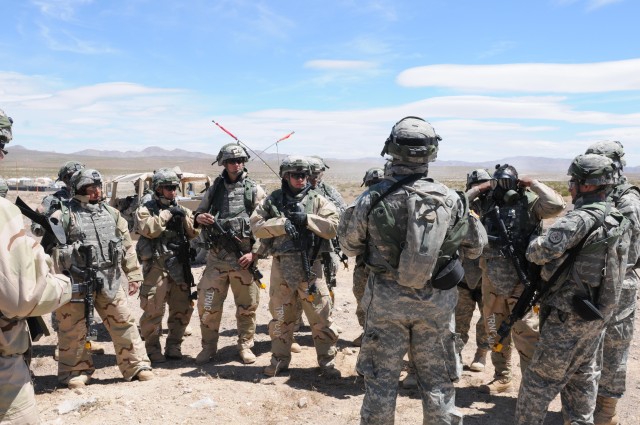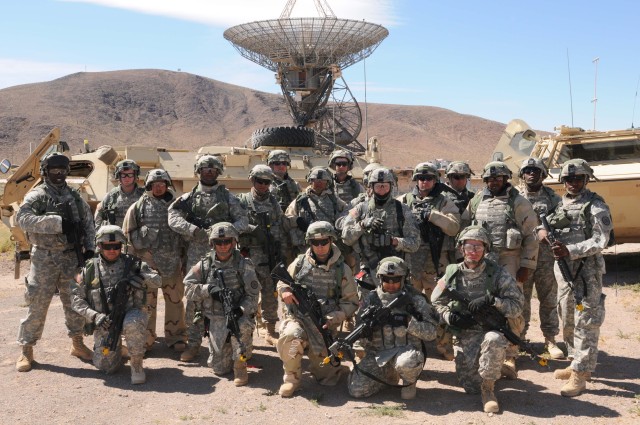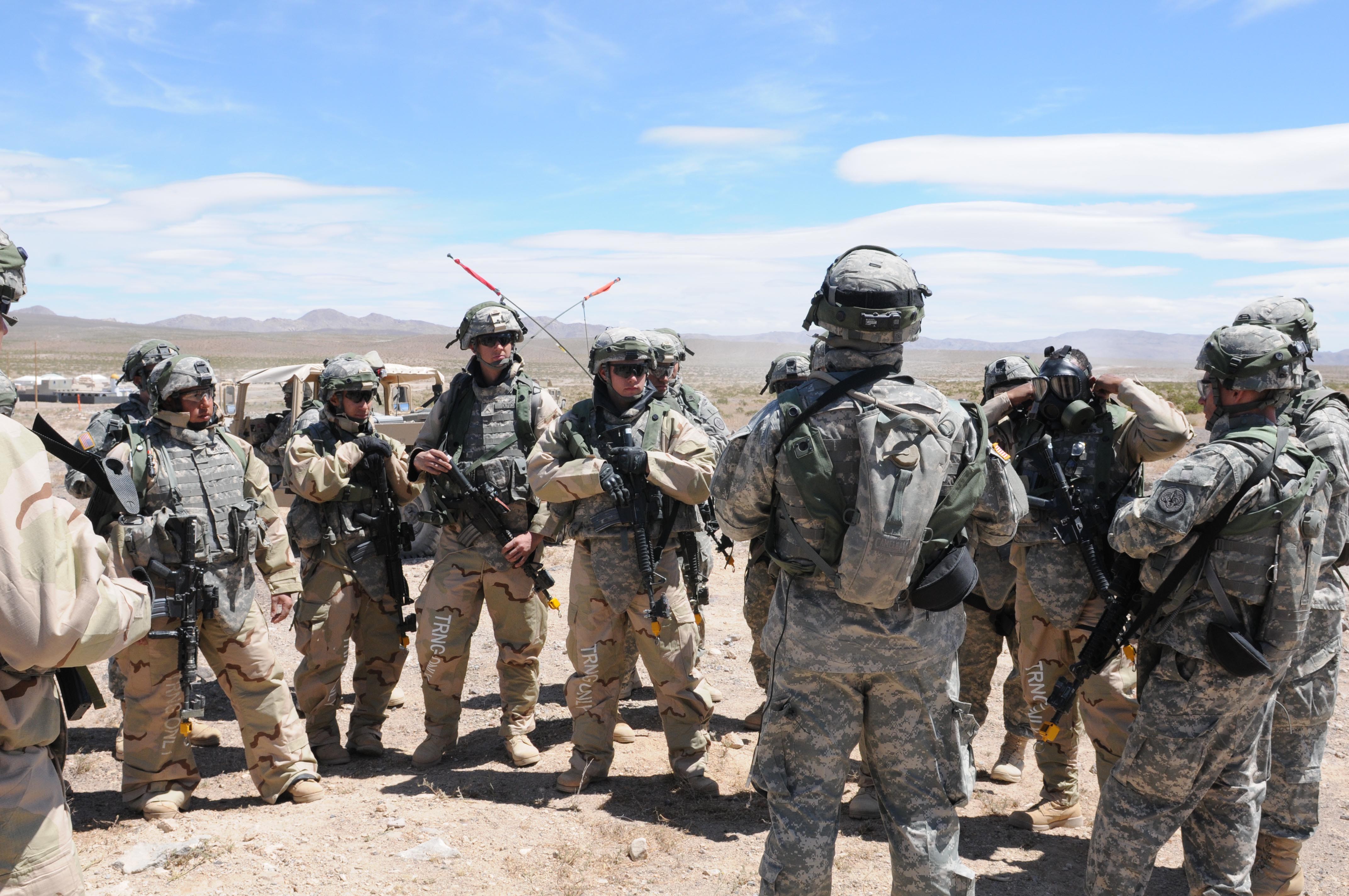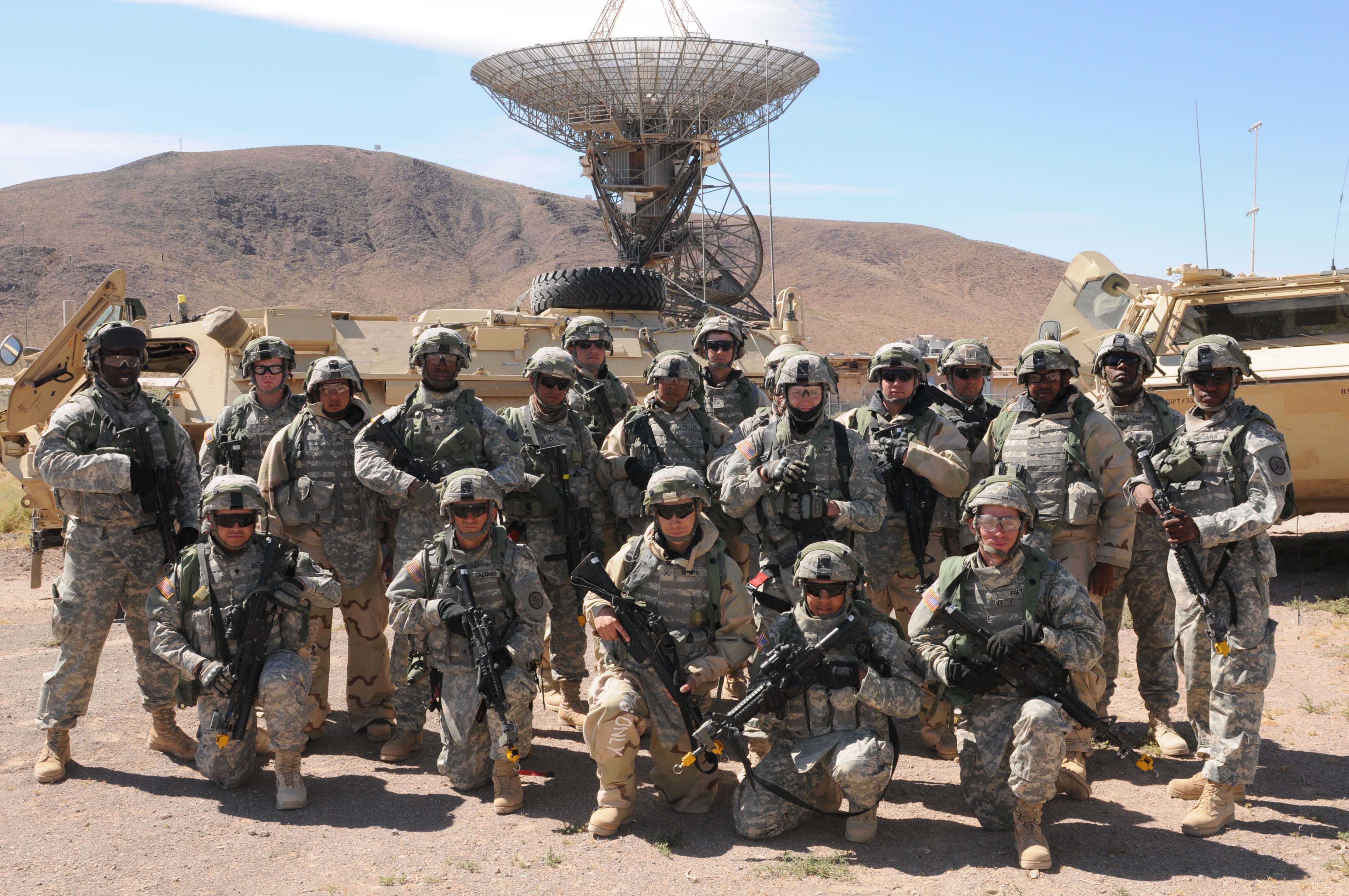FORT IRWIN, California - For most Soldiers the idea of not doing the job one is trained for is a nightmare, but for the chemical specialist it is the unfortunate day he needs to do his job.
Chemical warfare is mostly a tactic of past wars, but the Soldiers of the 89th Chemical Company, 3rd Armored Cavalry Regiment or "ChemDawgs", train a new set of skills for when the enemy decides to challenge them.
During a situational training exercise at Fort Irwin's National Training Center May 26, the ChemDawgs geared up for the chance to hone their ability to detect and contain hazardous chemicals in preparation for when they deploy to Iraq this summer.
"The concept of the old style of looking for chemicals and big missiles has changed, now you're looking more for [toxic materials], house hold chemicals being put together and made into bombs," said Sgt. George Cano, 89th Chem. Co. squad leader.
In addition to their chemical mission, the ChemDawgs are often tasked with missions such as quick reaction force and convoy security.
The reconnaissance platoon of the ChemDawgs was tasked with a training mission to survey a possible chemical contamination in a hostile area. Once in enemy territory, an improvised explosive device hit the team and then sniper fire was used to add stress to the situation.
Later, after the first attack, the platoon was able to recover and continue the mission. Recon was able to secure the contaminated area, accomplish their mission while sustaining minimal simulated casualties.
One of the key tools that the reconnaissance platoon uses is the FOX M93A1 Nuclear, Biological, and Chemical Reconnaissance vehicle.
Pfc. Daniel Kimberlin, 89th Chem. Co. said the FOX is a rolling laboratory. It takes air, water, and ground samples and analyzes it from a list of possible hazardous materials.
"I think the most important thing was actually getting everybody out into the [FOX] together, communicating, being able to tackle any issues that came about and being able to work as a team," said Cano.
"A lot of people outside the chemical unit don't get to see what we actually do," said Kimberlin. "Hopefully I will never need to use what I've learned here, but it's good to keep these skills sharp for the day when we do need them."




Social Sharing